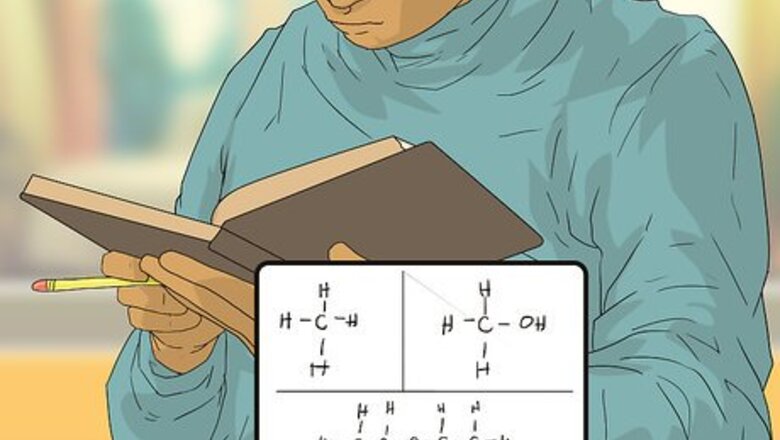
views
Starting the Problem
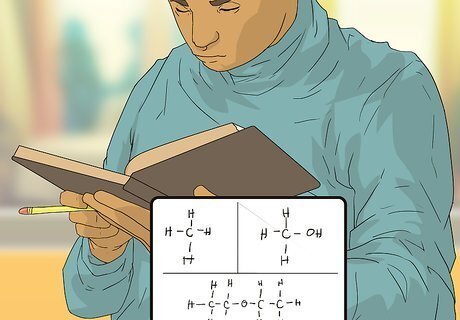
Read the problem completely. This is the most crucial step to beginning any problem. You must ensure that you completely understand what the problem is asking. You should also attempt to recognize any clever wordplay and try to decipher exactly what is needed to solve the problem. Many problems will have misleading information such as giving you numbers or information that is not needed for your problem. Always try to recognize the type of problem you are working with. For example, in organic chemistry, your prompt should have some form of information that you can infer the reaction time from (i.e. specific reactants).

Gather your materials. Chemistry problems will often require more information than is given in the prompt. The most common example of this is the periodic table; before you begin solving, identify which tables are necessary and make sure that you have them on hand. You should be able to determine what materials you need by determining the subject of the problem; for example, most stoichiometric problems will require the periodic table so that you can determine atomic weight.

Map out your steps. For reaction problems sometimes, it can be easier to guess intermediate products than the final product. Try to guess at your intermediate products as well as your final. This can help you predict which reactions will happen and where. It is a good practice to try to remember past problems to help you guess at products, especially when working with reactions.
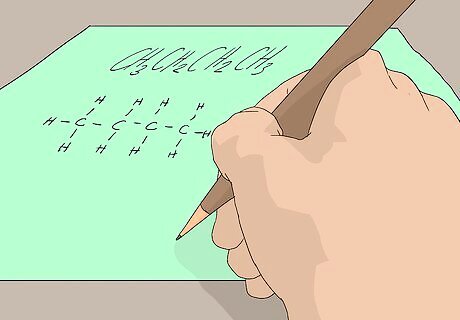
Draw the problem. Many Chemistry problems, especially in organic chemistry are required to be drawn out to be able to solve them. Even if it is not required, visualizing the problem is always useful in chemistry it can help you make a reasonable assumption to compare to your answer. Using color for reaction problems can be very helpful, for long problems it can be easy to lose track of what you are working with.

Recall similar problems. Sometimes you are able to compare a problem to one you have done in the past. If you can do this try to remember how you solved that past problem and apply your reasoning to your new problem. However, be extra careful that the problem is not worded differently and is asking for the same things. For example, just because a reaction is using the same reactants as a past problem, does not necessarily mean it will react the same way.
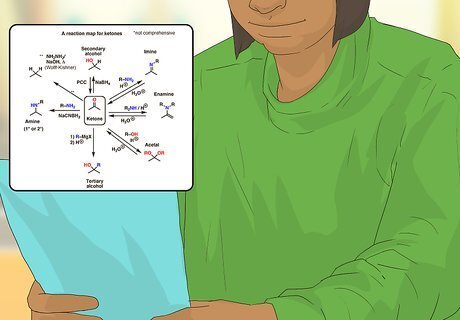
Estimate your answer. In many problems, you can predict a ballpark figure. If you are working on organic reactions, then it can be useful to draw out what the final compound should look like. As you go through your reaction each step you take should bring you closer to your final product.
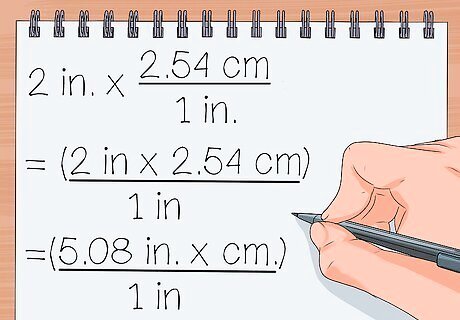
Check your units. Nearly all Chemistry problems require units. Before you begin make sure that your units are using the same measurement system. If possible, you should also convert any units to one specific unit of your choice. For example, if it gives you two measurements one in liters and one in milliliters, then before you begin solving you should convert one to the other. Doing this will save you the confusion later trying to find why your answer is off by however many degrees.
Finishing the Problem
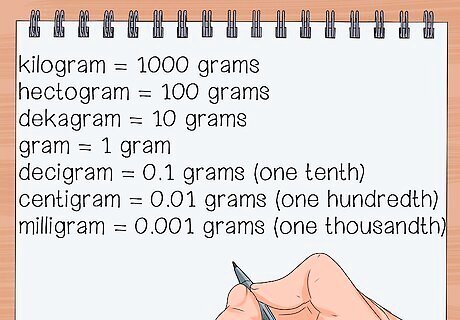
Check your units again. Ensure that they make sense in the context of the problem. If you have time go through your work and pay attention to any part where you made conversions or changed the degree. It can be easy to misplace a decimal, and unit errors are one of the biggest reasons for error in chemistry.

Attempt a different method. If you have time, solve the problem again but this time try to use a different method. Choose the answer you are more comfortable with or the answer that makes more sense in the context of the problem. For example, if you are working on a reaction try a different method to reach your final product, doing this can help you recognize any error you made in your original method.

Understand your answer. Once you have finished take a careful look at your final answer. Does it make sense in the context of the problem? If your number is unusually large or small, then that is a good indicator that you need to go back and check your work. Compare your answer to what you estimated before, if you understood the problem then they should be similar.
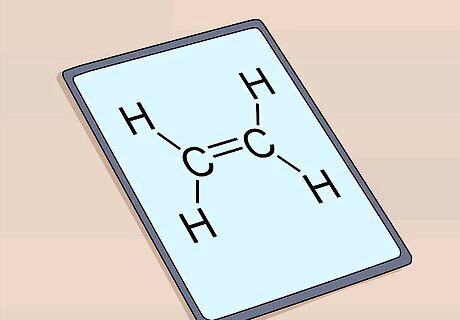
Check your drawing. For a reaction problem, it can be easy to lose track of arrows and charges. Once you have finished, double-check that all of your work is drawn correctly and that anyone grading it will be able to easily read and understand your work.

Learn from your work. Chemical reactions will follow patterns, once you have finished your problem take a moment and look over your work. If you can remember it the next time are working on a similar problem, it will make it much easier for yourself. If possible, try to save and catalogue any answers, if you have similar problems on hand it can make it much easier to work on new problems.




















Comments
0 comment